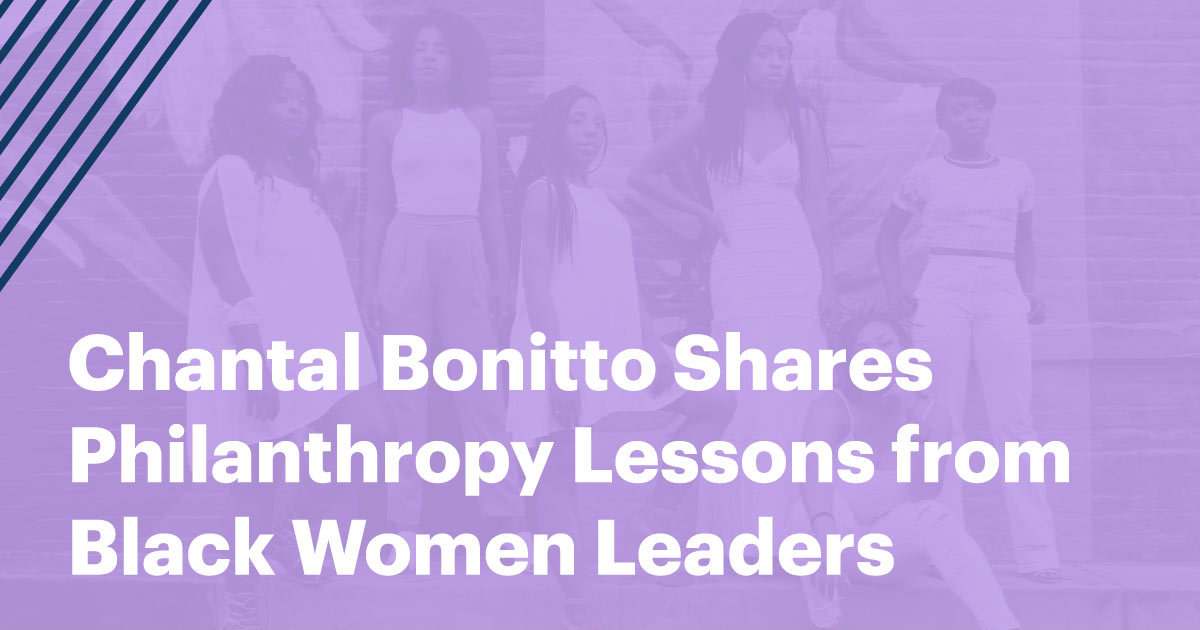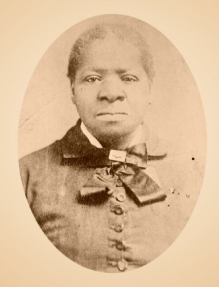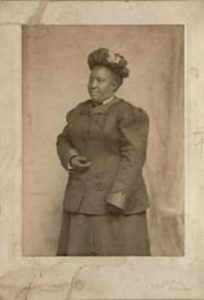Nonprofit Technology & Fundraising Blog
Subscribe to our mailing list
October 25, 2021 |

From Lessons for Philanthropy from Black Women Leaders by Chantal Bonitto
Last week, Chantal Bonitto spoke in the DonorPerfect CommUNITY Conference keynote session, Strategies for Engaging Racially & Culturally Diverse Donors.
“This session was very compelling and enlightening. It truly spoke to my heart and what I’ve been struggling with in this profession. The session gave me hope, a sense of direction, and a reminder to never give up on yourself and what you believe you can achieve.”
LaShaundra, Palm Beach County Food Bank
“This was a very powerful, honest presentation and leaves me as a privileged white woman with a lot more to think about in how to engage and build relationships with people of colour inside and outside my organization.”
Christine, Rare Charitable Research Reserve
“Love the point of not making your employees who are persons of color do the work of diversity, equity, and inclusion (DEI). It’s worth the investment in a consultant.”
Kathy, CASA of St. Louis
“Very timely for us as we are starting down the road – with consultants to help – of becoming an anti-racist organization. Great info, powerful views from amazing speakers!”
Michael, Food for Lane County
The fundraising world – as we know it – has a lot to learn from experts like Chantal, who work to highlight the philanthropic leaders of color who helped build it. Multiple levels of systemic racism have kept us from recognizing these women as philanthropic leaders.
When you ask most people to name philanthropic leaders, the list is usually populated by their family members, plus a few American tycoons. Industrialists of the early 20th century such as Andrew Carnegie, Henry Ford, and John D. Rockefeller come to mind, as do the technology and nance titans of today. Reflecting the historic racial divisions in financial wealth in America, philanthropic history and communities largely reflect the charitable actions of white ultra-wealth.
Philanthropy must reflect American diversity, not only as a matter of principle, but because donors of color do exist, they are extraordinarily generous, and more engaged in the human rights and social justice movements of our times.
In fact, donors of color have always existed. Before Carnegie, Ford or Rockefeller were even born, Black women were philanthropic leaders. Today it would be particularly useful to study those who organized and funded anti-slavery movements in 19th century America, including Julia Williams, Bridget “Biddy” Mason, and Sarah Mapps Douglass. Each of these women’s miraculous lives deserves its own dissertation, showcasing the rich history of African-American philanthropy.
Born free in the South, Julia Williams (1811-1878) journeyed to Massachusetts as a child and Connecticut at age 21 for an education, becoming a member of the Boston Female Anti Slavery Society. Williams supported educational institutions for Black children, including leading an industrial school for girls in Jamaica.

Born enslaved, Biddy Mason (1818-1891) would become a national hero. Mason petitioned for, and won her own freedom, becoming a nurse and a successful California real estate entrepreneur. She was a founder of the First A.M.E Church in Los Angeles and impacted many lives through her generosity.

For an example of a true renaissance woman with a particularly colorful life, Sarah Mapps Douglass is a fount of inspiration. Born in 1806, Mapps Douglass was the freeborn daughter of a distinguished black abolitionist family in Philadelphia and a contemporary and close friend of Lucretia Mott and the abolitionist sisters, Sarah and Angelina Grimké.
In addition to being a prominent abolitionist and educator, Mapps Douglass was also a writer and artist, who adorned the corners of her stationary with delicate watercolor flowers.
In a portion of her published writings in 1832, she paints a raw picture of her call to activism, “…I started up, and with one mighty effort threw from me the lethargy which had covered me as a mantle for years; and determined, by the help of the Almighty, to use every exertion in my power to elevate the character of my wronged and neglected race.”
Despite being from a prominent free Black family in the North, Sarah was not excluded from the dangers of racism in America. One year after writing about her call to activism, she attended the 1833 Anti-Slavery Convention of American Women in Philadelphia. There, an angry mob of white men, offended by the organizers’ refusal to restrict their meetings to white women, burned down the convention meeting hall. Sarah could not be deterred, and would go on to play a significant role in the national anti-enslavement conventions from 1837 to 1839.
Multiple levels of systemic racism have kept us from recognizing these women as philanthropic leaders. In the antebellum period, affluent Black women and their families were despised specifically out of fear of their potential for intergenerational wealth and activism. In the thirty-five years after Sarah’s passing, massacres of affluent Black communities were committed in East St. Louis, Ill (1917), Washington D.C. (1919), Elaine, Ark (1919), Tulsa, Okla. (1921), and Rosewood, Fla. (1923).
While these Black women were funding alongside white women feminists and abolitionists, they were still segregated from white women within these spaces. When Julia Williams, a black woman, and abolitionist, traveled with white attendees of integrated anti-slavery conventions, she was forced to eat meals separately from her party and was required to stay in a boarding house designated for black people.
This is American history. The hidden stories of American philanthropy must be told and learned today. Once we see the origins of philanthropy and recognize philanthropists, not only as white men but as women – and in the context of the origin of this nations’ ties to slavery, Black women, we can shift how we seek to engage Black, indigenous, and people of color philanthropists.
Through Sarah’s lived experience of feeling excluded and unsafe because of her gender and race, she recognized that the fight for enslaved Black people meant liberation for herself and in turn all intersections of marginalized communities.
Gender lens and Black philanthropy existed before what we now recognize as traditional American philanthropy. As we understand the movement for Black lives today, recognize that Black women were the captains of the soul of Black folk and I argue that we still are.
As historically white institutions seek to have more inclusive fundraising practices they should not invite donors of color to participate in giving as if it is something new to them, they should kindly earn an invitation to the already existing tables of generosity that Black, Indigenous, and people of color have created out of necessity. Let names such as Douglass, Williams, and Mason lead the way.
Follow us on social!